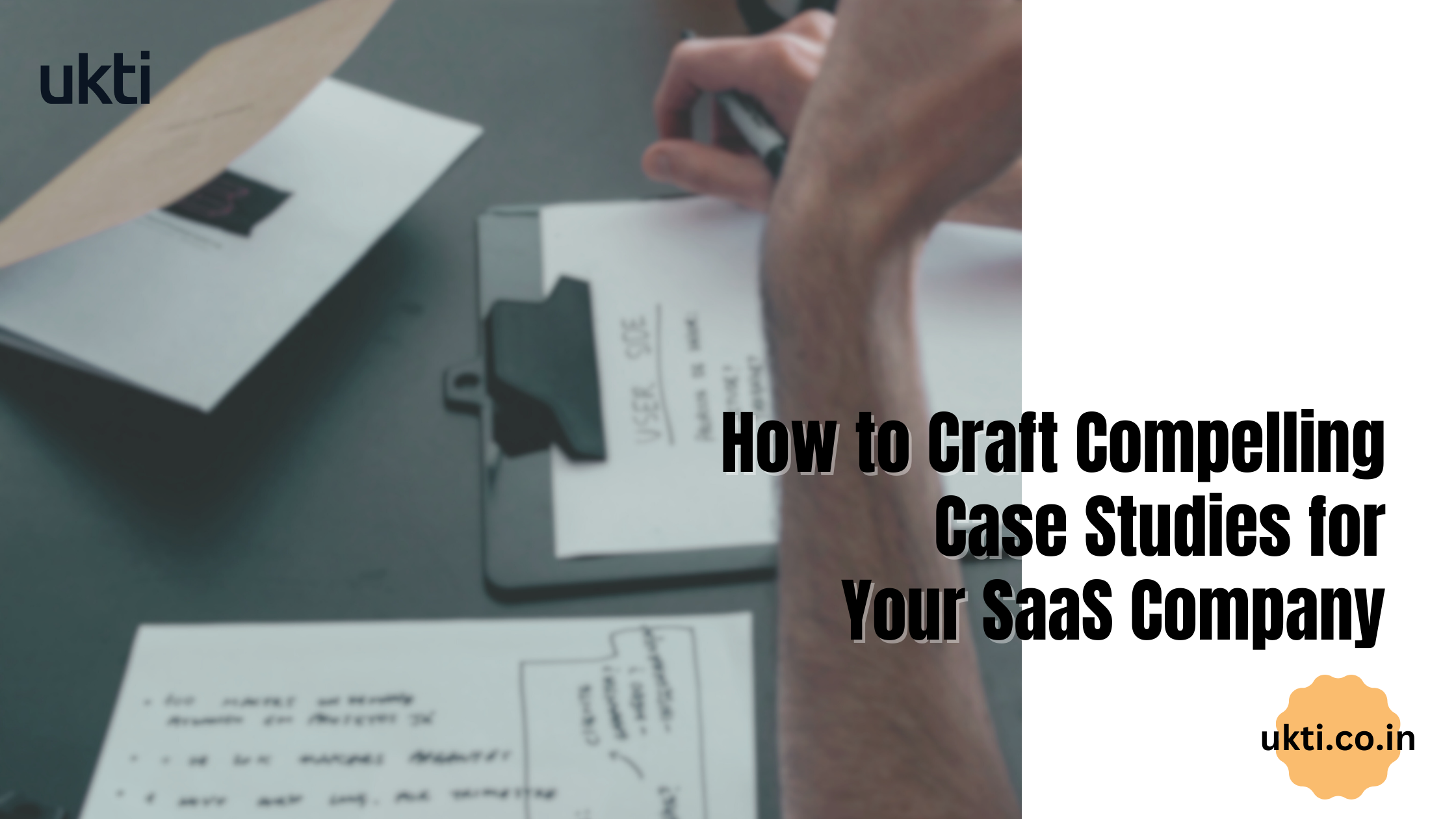The world of content marketing is ripe with opportunities. From blogs and e-books to videos and podcasts, content marketers have an assortment of options to dabble in. But SaaS companies need more than this.
They need a strategic approach to showcase their success stories that make potential buyers stop and go “This is it!”
Case studies are that strategic approach.
They offer a simple, yet powerful way to not only show what your SaaS product can do for others but also back it with cold, robust data. In fact, they were one of the top three content formats used by B2B marketers in 2023.
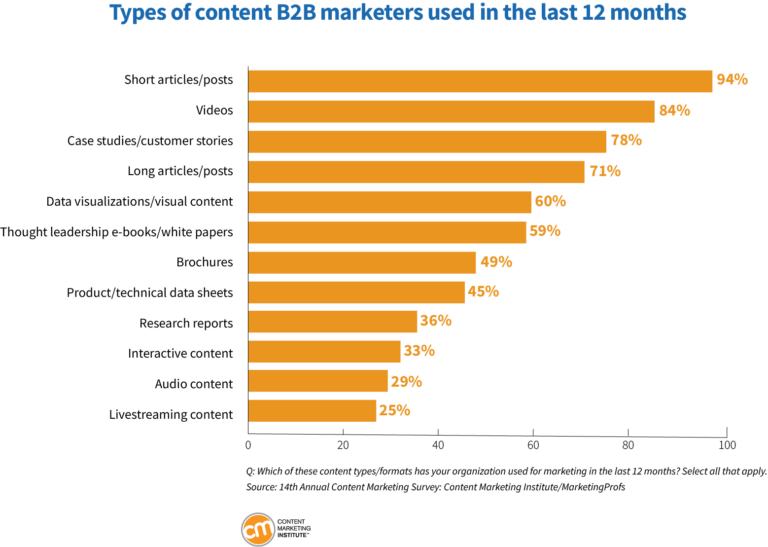
Source: Content Marketing Institute
But how do you craft killer case studies for SaaS that convert leads into customers? By using this 5-step guide.
What Exactly is a SaaS Case Study?
A SaaS case study is an in-depth account of how one of your customers successfully used your software to overcome their challenges and achieve their goals. It goes beyond just listing features and benefits and dives deep into a real-world situation that shows how your solution saved the day.
A case study not only highlights the issue the client was dealing with but also explains how your SaaS product solved it, resulting in a positive outcome. It serves as social proof of your product’s efficacy, providing potential customers with relatable success stories that can influence their decision-making process.
Don’t just take my word for it. 53% of marketers saw some of their best results with case studies.
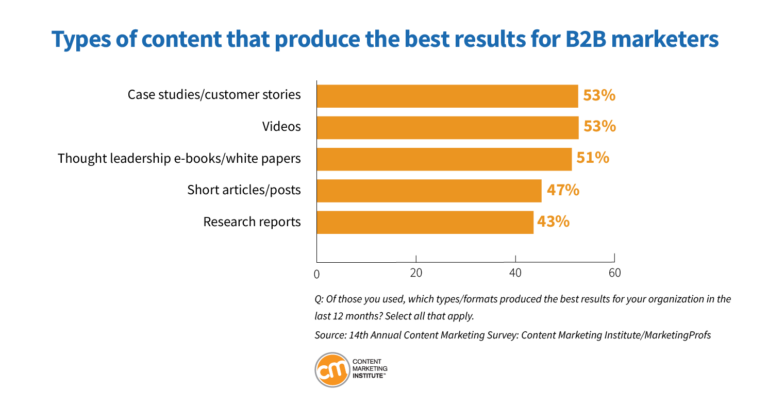
Source: Content Marketing Institute
And now that we’re on the same page, let’s answer the most important question.
How to Craft a Winning SaaS Case Study?
#1 Select the Right Client
Crafting a SaaS marketing case study starts by identifying the star of the show – the client you want to highlight.
While you may have a bunch of customers to choose from, select one that matches your ideal customer profile (ICP) in terms of business size, industry, and challenges. This will make your case study more relevant and appealing to your target market.
It’s even better if you select a client who has achieved remarkable and measurable success with your product as it can make the case study more compelling and credible.
Once you’ve pinpointed the client whose story perfectly captures the value of your SaaS product, the next step is to gather all the nitty-gritty details about their journey. This includes:
- Understanding their initial challenges
- Why they chose your solution
- How they implemented it
- The results they got
A simple way to do this is by approaching the client for an interview. But before setting up a meeting, there’s something else you must do.
#2 Define Your Objective
Determine what exactly you want your potential buyers to take away from the case study. This will help you set the right narrative and ensure it aligns with your marketing goals.
For example, you might want to highlight a product feature like scalability, customization, cost-effectiveness, or user-friendliness. Or you might want to address common challenges faced by your target audience that your product successfully addresses.
Take this case study shared by Gong, for example.
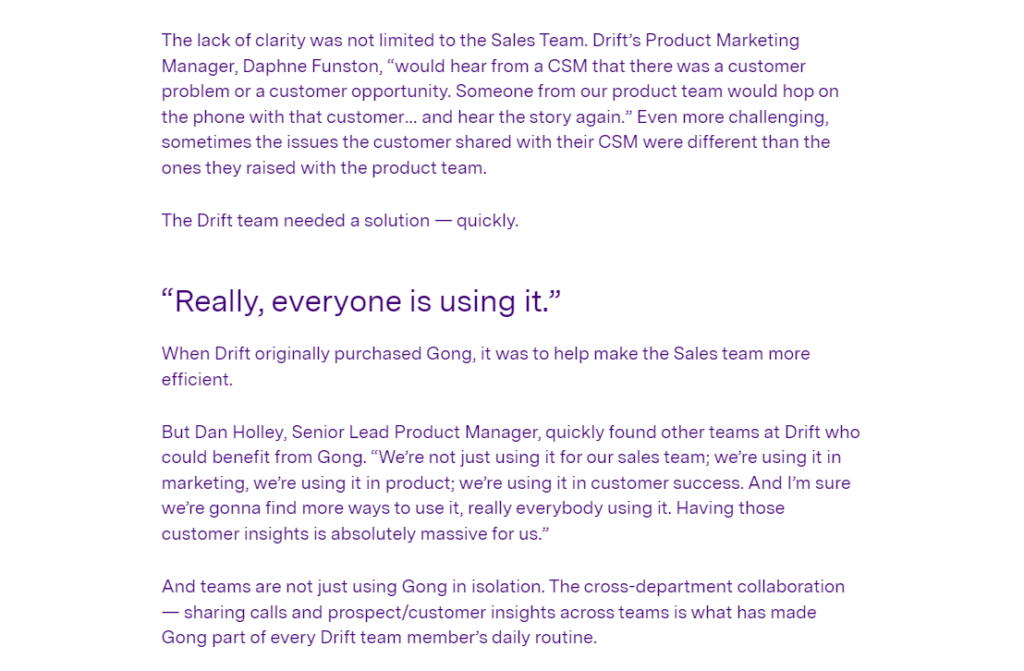
Source: Gong
Through the case study, Gong aimed to highlight how Drift upped its sales productivity using its data-rich platform. The objective here is twofold: to showcase how Drift used Gong’s insights to enhance its sales strategies and to prove the tangible benefits of Gong’s platform in optimizing sales performance. This way, it did not just narrate Drift’s success story but also explained how Gong’s platform played a major role in it.
#3 Prepare for the Interview
Once you’ve narrowed down the perfect client and set your objectives, it’s time to prepare for the interview. To ensure you don’t miss any important details, create a set of questions that align with your objectives. For example,
- Can you share the specific challenges or pain points you were experiencing before implementing our SaaS solution?
- How has our product solved this issue?
- Which features or functionalities of our SaaS product have been most beneficial to your business?
- What specific outcomes have you experienced after using our SaaS solution? (e.g., increased revenue, improved customer satisfaction, reduced time-to-market)
- Can you discuss any measurable results like cost-savings or increased productivity that our solution has helped you achieve?
- Have you used our product in any other unique way?
Make sure to tailor these questions to the client and your objective. Once you’re ready, go ahead and schedule the meeting.
However, the client might be busy and won’t be available for a meeting. In this case, you can send them a written questionnaire and ask them to fill it out at their convenience.
#4 Start Crafting Your Case Study
With all the required details in place, it’s time to set the ball rolling on the case study for your software. To make sure it is impactful and compelling, you must nail these six elements:
a. The Headline
Create a catchy headline that not only appeals to the reader but also communicates the key message instantly. It should sum up the main outcome or benefit the client experienced.
Here’s an example from Typeform:

Source: Typeform
b. Introduction
The introduction sets the stage for your SaaS case study. Briefly introduce the client and provide context about their industry and specific challenges. Typeform not only used a straightforward headline but also followed it up with a catchy introduction without giving away too much info, compelling readers to dive into the details.
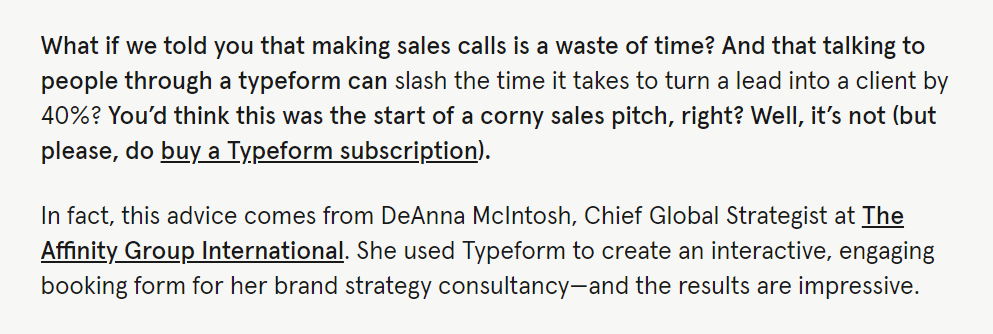
Source: Typeform
c. Challenges and Goals
Next, list down the challenges the client faced before implementing your solution. This section should connect with your target audience by reflecting common pain points. Additionally, describe the goals the client wanted to achieve by overcoming these challenges. Make sure these are specific, measurable, and relevant to your audience.
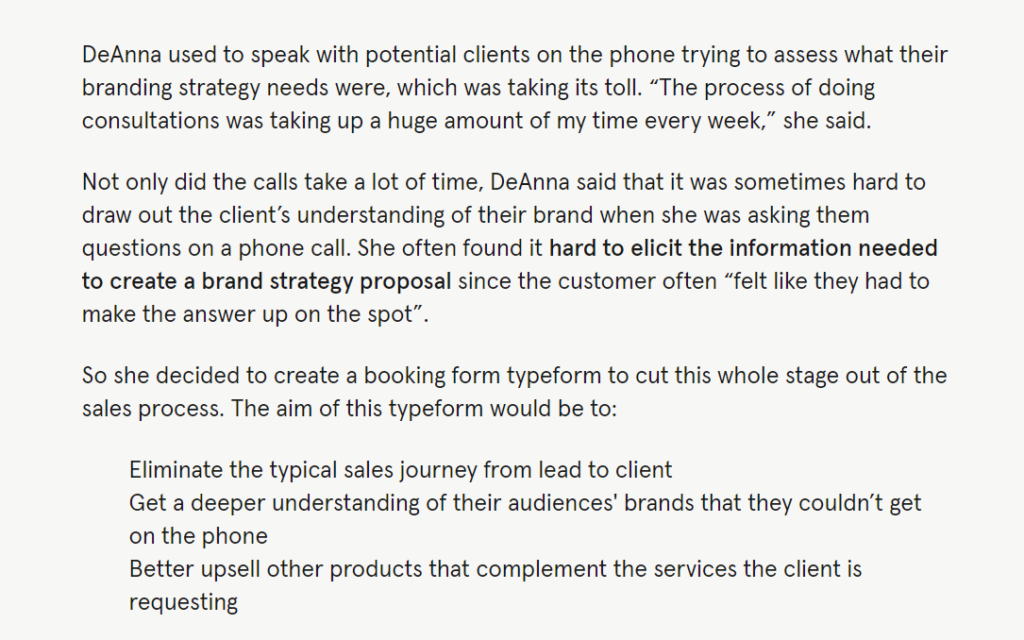
Source: Typeform
d. Solution
Now comes the most important section – showing how exactly your product helped the client overcome their challenges and achieve their goals. Highlight the features and functionalities the client used and how they were implemented. Make sure to focus on why your solution was chosen over others and how it was tailored to meet the client’s needs.
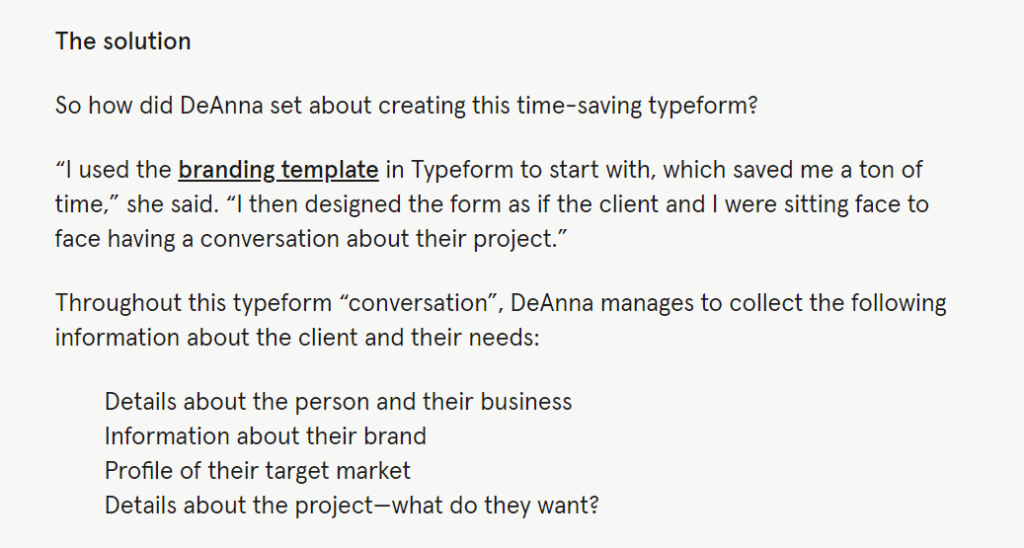
Source: Typeform
e. Results and ROI
Highlighting measurable, quantifiable results can help you prove your product’s value using tangible numbers. Share results in terms of key performance indicators (KPIs), like increased revenue, improved efficiency, or cost savings. You can also use visual aids like charts and graphs to make the point.
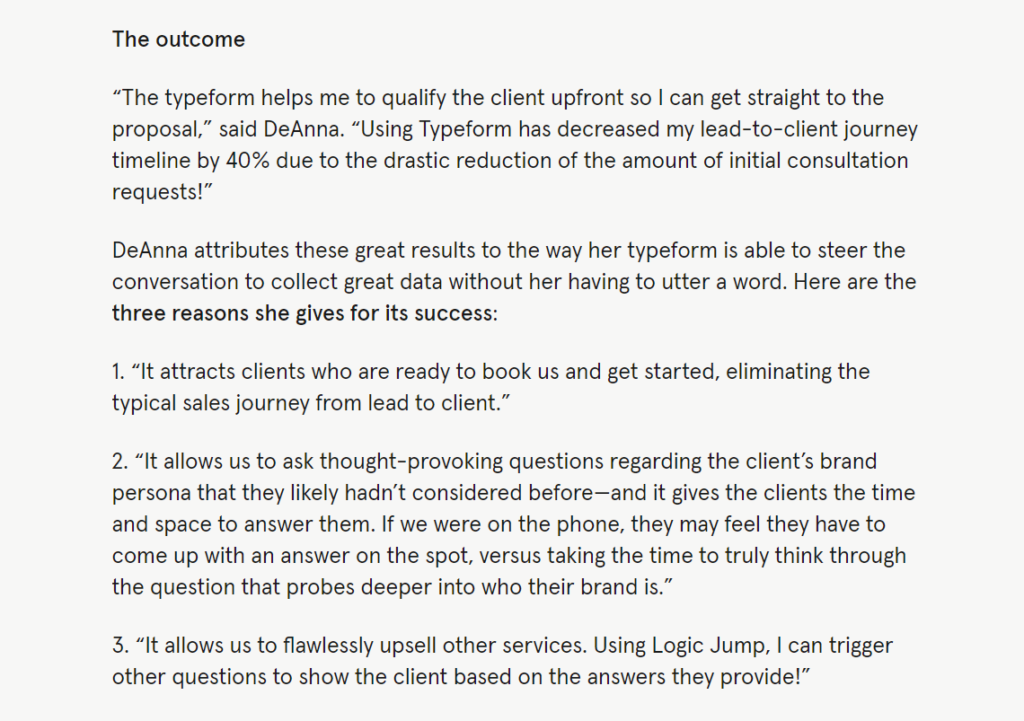
Source: Typeform
f. Conclusion and CTA
Finally, wrap up your SaaS marketing case study by summarizing the key points: the challenge, the solution, and the results. End with a compelling call-to-action (CTA) that encourages the reader to learn more about your product, request a demo, or contact sales.
#5 Promote Your Case Study
Promoting your SaaS case study is crucial to ensure it reaches your target audience and drives the desired action. Here are some strategies you can use:
- Publish it on your blog.
- Share on social media.
- Include it in email newsletters.
- Share it on industry publications or websites.
- Use it as a tool during sales pitches.
Drive Success with Killer Case Studies
Writing a compelling case study for a SaaS company can be a powerful strategy to showcase your solution’s real-world impact. A well-crafted case study not only highlights your product’s benefits and ROI but also builds credibility and trust with potential customers.
So go ahead and get cracking on your best story. Just remember, the success of a case study for software depends on its ability to tell a relatable, results-driven story that convinces prospects why your solution is the best choice for their needs.

